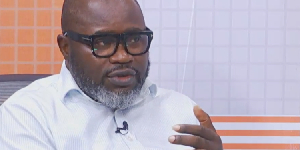
The Executive Director of Africa Educational Watch (EduWatch) has asserted that lack of Junior High Schools in some part of the country is a major cause for school dropout.
In a post shared on his official Facebook page on Friday, 4th March 2022 he wrote;
One of the indicators of equitable access is Primary-JHS transition. It measures the rate at which primary school graduates progress to JHS.
From a baseline of 94.3% in 2016/7, a target of 99% was set by the MoE by 2021. As of 2020, national attainment rather declined to 92.5%, even below the baseline, with deprived districts recording 82%.
This means in deprived districts, close to one-fifth of students drop out after primary school. A major causal factor is the lack of JHS we keep hammering on. Nationally, about 25% of primary schools do not have JHSs.
In the Northern Region, the percentage is even higher (40%), forcing many to commute up to ten miles daily to access JHS. The distance alone does not encourage primary-JHS transition, facilitating drop-outs.
In our November 2021 report on Deprivation and Learning Outcomes in Zabzugu and Nkwanta South, there were JHS charging admission fees from students who completed primary school in communities without JHS. We have since engaged the MoE on that report.
Yes, Government is building JHSs, but at a rate which will take more than 13 years to achieve primary-JHS parity i.e. only about 300/year, or about 1 per district per year on average since 2017.
The Government must prioritize basic education infrastructure by building 4,000 JHS to ensure parity with primary schools and desist from building primary schools without JHS.
It is time to adopt a composite school design which incorporates a KG, primary and JHS. We are not making progress with equitable access, especially at the JHS level, and all must be concerned.
By: Currentworldnews (Self Media Writer)
